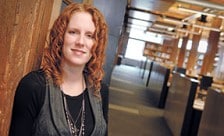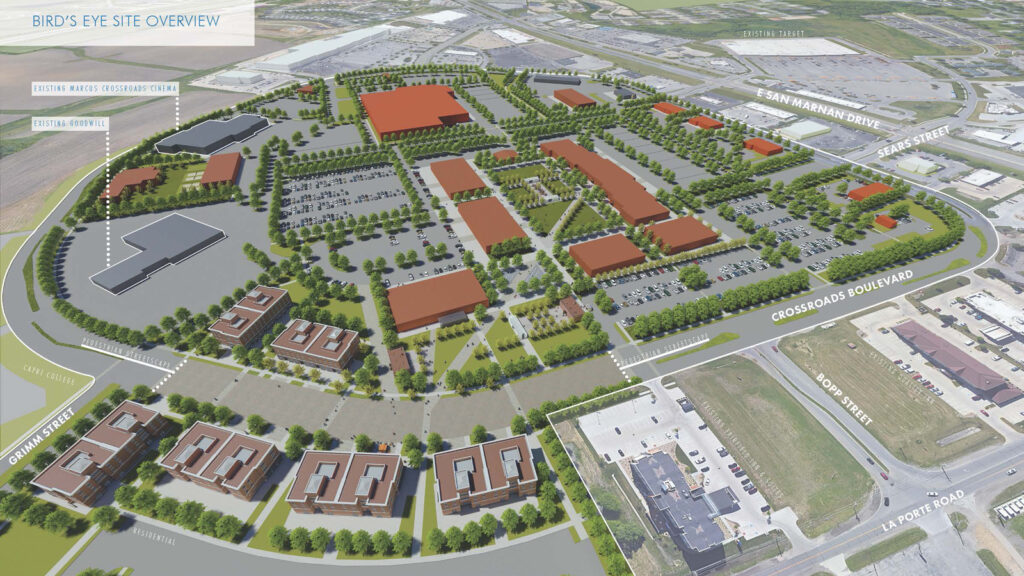Iowa architects hope to diversify their ranks

Substance Architecture is approaching a diversity milestone, and it wasn’t by design.
Paul Mankins, a principal of the 10-year-old Des Moines firm, counted heads recently and confirmed that yes, Substance was on the pinhead of gender equity.
“I think we have eight (women) out of 18 architects,” he said. “I haven’t even thought of it that way.”
Through recent hires, Substance reached a target that it wasn’t aiming for and surpassed a diversity standard that few architectural firms in Iowa or the country have reached.
“Architecture is one of the last professions that is woefully behind,” said Danielle Hermann, an architect with OPN Architects Inc., which has offices in Des Moines and Cedar Rapids.
Hermann leads the diversity committee established two years ago by the Iowa chapter of the American Institute of Architects (AIA).
Vague statistics have shown her that women and minorities make up between 12 and 20 percent of a profession that, for a variety of reasons, has been the domain of white males.
Her numbers aren’t firm. The AIA does not collect demographic information from its members, including about 800 in Iowa.
A poll of OPN offices found that companywide, 26.4 percent of its professionals are women or minorities, Hermann said. With those numbers in hand, she is confident that OPN is ahead of the curve.
Hermann and colleagues on the committee have set about determining the demographic makeup of architectural firms belonging to the AIA. They want to know whether architects view diversity on the job as an issue worth addressing.
She is encouraged by responses to a survey conducted with the help of Iowa State University. Judging by a response rate of nearly 40 percent, it appears that architects are at least thinking about and interested in the issue.
Some responses could fall into the “who cares” category, but a sampling shows that most architects, who were promised anonymity if they responded to the survey, believe the profession would benefit from the range of opinions and influences that women and minorities could provide.
The diversity committee started out as a task force in 2006, following the national AIA’s focus on diversity and finding ways to bring more women and minorities into the profession.
Hermann said the Iowa chapter heeded the call. She noted that outside of urban centers such as Boston and Atlanta, few AIA chapters have established diversity committees.
“AIA Iowa was quite forward-looking,” she said. “Not many chapters have a dedicated diversity committee. I give credit to the board for being interested in doing this.”
Hermann knows that diversity or lack of it is something that goes beyond bigotry.
“You need to be a certain type of person to hold your own on a construction site,” she said.
While a graduate student at Iowa State University, she wrote a thesis on the issue that examined the profession’s rigid work environment of long hours that left little time for family, which could be discouraging to women. In addition, women and minorities had few role models to help them negotiate the arduous and expensive educational requirements of simply obtaining a degree.
The Iowa diversity committee has established a mentoring program, called Track 1, in which architects volunteer to work with college students to help them navigate through college and their entry into the profession.
Hermann also pointed out that Iowa State University, among others, aggressively pursues students from throughout the United States and the world in an effort to have a more diverse student body.
Alejandra Feliciano, an architect with Architects Smith Metzger in Des Moines, was a high school student in Puerto Rico when an Iowa State representative showed up at her school.
“I didn’t even know where Iowa was,” she said. Her husband learned about the university when an Iowa State representative visited his high school in Venezuela.
Such efforts have resulted in classes made up of increasing numbers of women and minorities. The challenge is to help those students continue their education.
Hermann said finances can be intimidating, but so can attending classes every day that are composed of few people who look like you.
Mankins graduated from Iowa State in 1985. Out of the 106 architecture students in his class, three were women.
“It’s a matter of having role models,” he said. “I can’t imagine what it would have been like if you looked around and there was no one like you. That’s a hard thing to change. It’s a matter of no women go into architecture because there are no women in architecture. In the last 20 years, there has been a big change in that regard.”
The profession also needs to undergo some change, Mankins said.
“Generally architecture was not a very friendly profession, family- wise,” he said. “I think people have become a lot more realistic. I try not to mistake productivity with actual face time. I’m more concerned about people being productive than that they live in the office. I don’t think I’m alone in that regard. Living in the office in the long run is not very healthy for your profession.”










